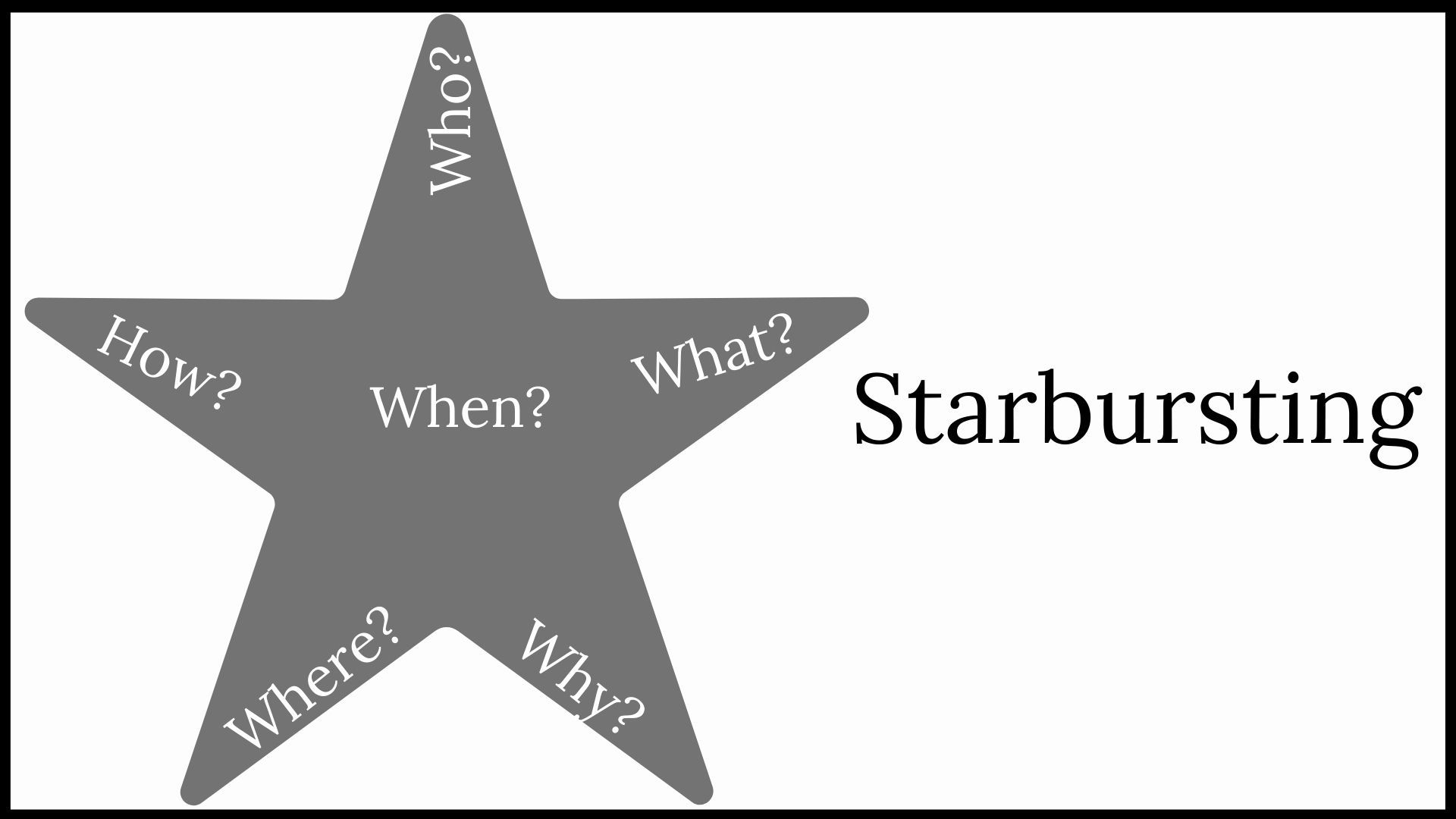
Types of Brainstorming Techniques for Effective Decision Making

Starbursting: A powerful brainstorming technique for effective decision-making in product design and concept development Discover how it benefits organizations and learn the key steps to implement it Also, explore its limitations to make informed choices Improve your brainstorming game with Starbursting!
By using the starbursting technique, we can explore all aspects of the product or concept, including its potential uses, limitations, target audience, and unique selling points. This helps us to identify any potential issues or challenges that may arise and develop solutions to address them. Ultimately, the goal of starbursting is to ensure that the product or concept is well thought out and meets the needs of the intended audience.
Starbursting is a valuable tool that can be applied to various business functions. By focusing on a central product, service, or concept, and expanding outward with questions related to the topic, it helps to uncover essential details. Using the familiar image of a star, with the topic at its center and questions at the tips, the method prompts inquiries such as "what," "why," "how," "when," and "where."
In order to fully explore new concepts, organizations often hold Starbursting meetings where a variety of questions are generated to cover all aspects of the concept. After the questions are generated, a dedicated team is assigned to find answers to each of them. This approach can be beneficial for organizations of any size.
Introduction to Starbursting: A subset of Brainstorming
We all know the essence of brainstorming in any concept building and its implementation.
By gathering questions about the concept or product, starbursting enables us to approach the decision-making process with a more comprehensive understanding of the topic. Rather than providing direct answers, this method focuses on gathering as much information as possible, which ultimately leads to a more informed and confident decision.
After the development of a new product or a new concept, the confusion among the staff is natural.
Whether the product will succeed?
What about the competitors?
How to work on the new concept? How will be the new work schedule?
These are the common questions that the staff must raise. Through these questions, they get to know about the product/concept better.
How Does Starbursting help Different Organizations?
No organization can succeed with any new concept if the members of the organization hold doubts about it, and information known to them is not clear.
pertinent to the concept. This can help in identifying any gaps or weaknesses in the concept and address them before it is launched in the market. Encouraging questions and being transparent about the concept can build trust and credibility among the stakeholders.
- What is the product about?
- Who will be the potential customer?
- What is the target geographical region?
- How to tackle competitors?
- When will the product be launched?
- How will we handle the post-launch processes?
- What will be our benefit?
- How will we be conducting the research process?
Having answers to these questions can satisfy your team's curiosity about the new product or concept. This clarity can eliminate any doubts they have, making the team more efficient and less prone to mistakes when working on the project. Additionally, conducting starbursting sessions can further enhance the team's understanding of the product/concept, leading to better results.
So, starbursting is directly linked to your team’s efficiency.
Once you allow your team to raise questions, they think differently and more efficiently, which isn’t possible otherwise.
Teams may get too caught up in generating ideas, leading to a lack of focus and difficulty in selecting the most promising ones. Additionally, some team members may dominate the conversation, leading to unequal participation and potentially missing out on valuable insights from others. It is important for teams to be aware of these potential drawbacks and actively work to mitigate them during the starbursting process.
Disadvantages
Starbursting holds tons of perks and seems almost perfect yet; there are certain disadvantages associated with it.
A major drawback of the starbursting technique is the possibility of encountering questions or issues in later stages that were not addressed during the initial brainstorming session. This can result in the need for additional meetings and planning sessions, rendering the starbursting exercise less effective in the long run.
Encouraging the team to ask questions during starbursting sessions can be challenging, but it is necessary for optimal results. Despite some potential drawbacks, the benefits of utilizing starbursting make it a valuable tool for any organization.
Let us now understand how you can do Starbursting like a pro-
Key Steps of Starbursting
Encourage them to think outside the box and come up with as many questions as possible. Write these questions down on a whiteboard or piece of paper.
Next, take each question and brainstorm potential answers and solutions. Allow for open discussion and debate among team members. Don’t be afraid to challenge each other’s ideas and think critically.
Once you have a list of potential solutions, evaluate each one based on feasibility, impact, and potential risks. Narrow down the list to the most promising solutions and develop an action plan to implement them.
Remember to keep an open mind and stay flexible throughout the process. The goal of starbursting is to generate innovative ideas and solutions, so don’t be afraid to take risks and try new things.
Now draw a big star on the whiteboard and right the concept or product’s description in the middle of it.
Once your team is ready with the questions, right them one by one on the tip of the star.
Write one-word questions such as "who," "what," "why," "how," etc. on the tip of the star and have your team brainstorm about the questions related to those words. Avoid answering the questions at this stage; simply focus on raising them.
Collect at least three questions for each tip of the star before proceeding. Once you have all the questions, begin answering them individually and jot down the responses in brief next to the corresponding question on the tip.
Summary
So, this is how you should conduct a starbursting session to ensure its pure efficiency.
Ensure that you reach out to every team member once more to ensure that they have the opportunity to provide any additional input in case any questions arise later on. It's important not to rush the process, so give your team ample time to consider their responses. It's recommended to hold two separate sessions: one for gathering questions and another for providing answers.
Share your experiences with using starbursting in your organization and the benefits it brought in the comments below.














